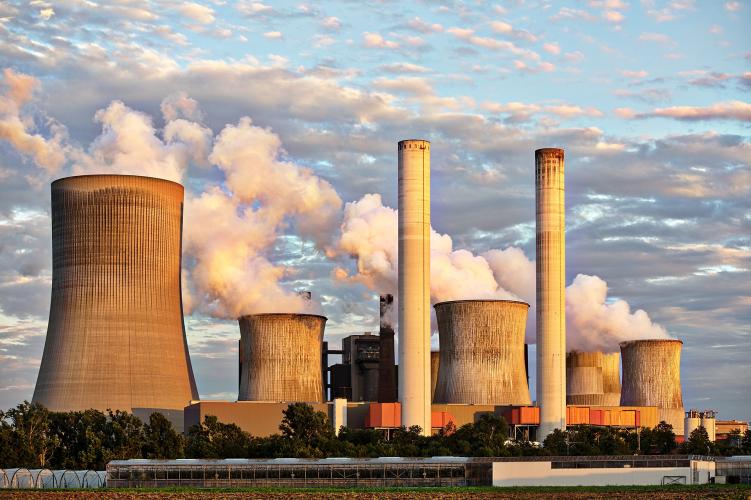
This story is probably apocryphal but worth retelling. Prime Minister Jawaharlal Nehru was visiting a coal mine in Bihar. He was told mining activity was down. When he asked why, he was told it was because there were not enough train wagons to carry the coal from the mine to the factory. Why not enough wagons? Because there wasn’t enough steel being produced to make wagons. That’s because the steel factories did not have enough power production to operate their factories at full capacity. Exasperated, Mr. Nehru asked, and why is there not enough power production? Because there wasn’t enough coal to feed the power plants!
Banks are staring at the possibility that nearly 1.8 lakh crore of loans to the power sector will become NPA’s. The stressed condition of the power projects (half of which are operational, and the other half are under construction) is because of a combination of reasons. Either they don’t have access to coal, or they don’t have a power purchase agreement, or due to an absence of a fuel supply agreement (FSA), or because of sub-optimal loading. Basically they have become stranded assets.
We have come a long way from that state of affairs, and indeed the steel sector is booming these days. Even the steel plants in the bankruptcy process are being gobbled up by enthusiastic bidders. But the coal and thermal power sector continues to be plagued by shortages, logistics bottlenecks and occasional policy inconsistency. The power sector situation is especially grim.
The Standing Committee on Energy in its thirty-seventh report to the Lok Sabha said that there are 40,000 megawatts of power projects which are under financial stress. These are on the brink of becoming non-performing assets, and may have to go through bankruptcy. This represents more than 10 percent of India’s installed electricity generation capacity. Banks are staring at the possibility that nearly 1.8 lakh crore of loans to the power sector will become NPA’s. The stressed condition of the power projects (half of which are operational, and the other half are under construction) is because of a combination of reasons. Either they don’t have access to coal, or they don’t have a power purchase agreement, or due to an absence of a fuel supply agreement (FSA), or because of sub-optimal loading. Basically they have become stranded assets. Many power projects, especially under the Ultra Mega Power Project scheme have had to be closed down due to unavailability of fuel. According to Crisil reports, of the 75 gigawatts of private thermal capacity, 20 GW has no long term power purchase agreement. It may be mentioned that 48,000 crore of gas based power is already declared as a non-performing asset or is under debt restructuring.
Progress on UDAY is not encouraging. The DISCOMs were supposed to tighten their belts, increase tariffs, reduce losses and make progress on financial health. Thanks to political populism, unwillingness to do tariff reform and patronage, the DISCOM woes continue. And State governments are becoming fiscally strapped.
Meanwhile, back in February, the Reserve Bank of India revised its guidelines for early detection and resolution of stressed assets (bank loans). It discontinued half a dozen earlier loan restructuring mechanisms, replaced it with a strict 180 day framework. Even a one day delay in repayment should lead to a classification of the loan as a “special mention account”. The account then remains sub-standard (i.e. attracting higher penal interest rate), until at least 20 percent of the stressed loan is repaid. This is too stringent as per the Independent Power Producers of India (IPPI). The IPPI has moved court against RBI and got some temporary relief, but RBI is not relenting. The RBI believes that the revised framework provides adequate leeway to resolve the bad loans in the power sector.
If the power producers are in bad shape, the distribution companies (DISCOMs) are in worse shape. The combined bad loans to state owned DISCOMs were more than 4 lakh crores. In order the help them the Central government devised the UDAY scheme, which allowed State governments to fund their DISCOMs without hurting their fiscal responsibility promises. As a result the State governments issued bonds worth nearly 2.4 lakh crores, the proceeds of which were injected into the DISCOMs. But progress on UDAY is not encouraging. The DISCOMs were supposed to tighten their belts, increase tariffs, reduce losses and make progress on financial health. Thanks to political populism, unwillingness to do tariff reform and patronage, the DISCOM woes continue. And State governments are becoming fiscally strapped. Their combined fiscal deficit ratio for year ending March 2018, was 3.1 percent against a budget of 2.7 percent. And this does not include UDAY money.
The power sector is additionally burdened with renewable purchase obligations (RPO). By next year the DISCOMs will have to purchase nearly 17 to 20 percent of their power from renewables (solar and wind). In many states there is simply no availability of such power, in which case they have to buy renewable energy certificates. This is a double whammy, since not only is the cost of REC extra, but DISCOMs anyway have to purchase coal based power for their customers. As a result of the RPO policies, many power producers have to back down their thermal production. This reduces their plant load factor, which increases their cost. The PLF cannot be reduced below a certain threshold. As it is India’s thermal power is operating at a multi year PLF low. Reduction in PLF also means reduced demand for coal.
An additional cost of thermal power is the coal cess. It has gone up from 50 to 400 rupees per ton, in the past five or six years, an increase of 800 percent. It has added hugely to the cost of thermal power, and is a de facto carbon tax. But the application of the carbon tax is uneven and excessive.
The movement of coal by railway wagons is a complex logistical challenge. It urgently calls for reform such as the “own your rake” (not own your wagon) scheme. It also calls for looking at private sector participation in mining and moving the coal.
Finally the coal sector too is facing shortages. India has the world’s third largest coal deposits, but has become the biggest importer too. This year estimated imports are 200 million tons, a multi year high. This is happening while output of many mines will be idle. This is a critical drain on the country’s foreign exchange. Of course some imports are essential either because the power plant is located on the coast, or the calorific value and ash content requirement calls for imported coal. India has now started importing coal from America, much to the delight of coal miners there, who are in President Trump’s loyal constituency. The evacuation of coal ash from power plants is a separate challenge which we won’t discuss here. The movement of coal by railway wagons is a complex logistical challenge. It urgently calls for reform such as the “own your rake” (not own your wagon) scheme. It also calls for looking at private sector participation in mining and moving the coal.
Clearly between coal and thermal power this is a complicated tango with consequences for India’s banking and energy security.
(The writer is an economist and Senior Fellow, Takshashila Institution)







